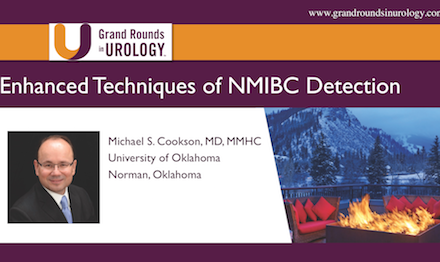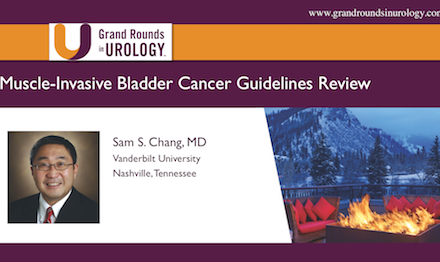Daniel Shoskes, MD; John P. Sfakianos, MD; and Sima P. Porten, MD, MPH; presented “Use of the Cxbladder Monitor Urine Genomics Test for Surveillance of Patients with Non-Muscle-Invasive Bladder Cancer” for the Grand Rounds in Urology audience in March 2023. You can learn more about the test discussed in this presentation at: https://www.cxbladder.com/us/
How to cite: Shoskes, Daniel, Sfakianos, John P., and Porten, Sima P. “Use of the Cxbladder Monitor Urine Genomics Test for Surveillance of Patients with Non-Muscle-Invasive Bladder Cancer” March 2023. Accessed Apr 2024. https://grandroundsinurology.com/use-of-the-cxbladder-monitor-urine-genomics-test-for-surveillance-of-patients-with-non-muscle-invasive-bladder-cancer/
Use of the Cxbladder Monitor Urine Genomics Test for Surveillance of Patients with Non-Muscle-Invasive Bladder Cancer – Summary
In this webinar, sponsored by Pacific Edge Diagnostics, Daniel Shoskes, MD; John P. Sfakianos, MD; and Sima P. Porten, MD, MPH; discuss the use of the Cxbladder Monitor Urine Genomics Test in active surveillance of patients with non-muscle-invasive bladder cancer (NMIBC).
Dr. Shoskes, Senior Medical Director, Pacific Edge Diagnostics USA, begins with a brief introduction to the latest AUA/SUO guidelines on NMIBC, in which all patients are either selected for cystoscopy or placed on active surveillance. He notes that the latter involves an elevated burden on healthcare providers as well as patients, which results in poor compliance with guidelines. As an exemplary result, in a 10-year period, only 1/4545 patients received all recommended measures in the treatment algorithm. Dr. Shoskes then discusses how the Cxbladder Monitor Test can help ease this burden. The test has a 96-97% negative predictive value (NPV) and 91-93% sensitivity rate, outperforming cytology as well as other FDA approved urine-based tests, and can be used to either replace or delay cystoscopy.
Dr. Sfankianos, Assistant Professor of Urology and Urologic Oncology at the Icahn School of Medicine at Mount Sinai, next discusses his experience with the utility of Cxbladder Monitor in surveillance. He notes that the differing recommendations of when to stop surveillance in the AUA and EAU guidelines create a dilemma for physicians. Dr. Sfakianos notes that non-invasive tests like Cxbladder can be used to reduce cystoscopies, as well as personalize the scheduling of appointments depending on the frequency of recurrence. He discusses population-based data his group analyzed, which showed a drop-off in recurrence and death over time, and discusses how he uses the test in his practice with low-, intermediate-, and high-risk patients.
Last, Dr. Porten, Associate Professor in Residence at the University of California San Francisco, discusses how her practice used the Cxbladder monitor test to reduce the frequency of surveillance cystoscopy during the pandemic. She describes how using the test combined with telehealth began as a trial program in 2018, but expanded as patient access to facilities was restricted at the beginning of the COVID-19 pandemic. Using the test combined with telehealth has reduced the necessity of surveillance cystoscopies, lowered patient costs (both for procedures, as well as travel and parking), as well as overall patient burden, without compromising oncological outcomes.

Daniel Shoskes, MD
Senior Medical Director,
Pacific Edge Diagnostics USA

Sima P. Porten, MD, MPH,
Associate Professor in Residence,
University of California San Francisco

John P. Sfakianos, MD,
Assistant Professor of Urology and Urologic Oncology,
Icahn School of Medicine at Mount Sinai




